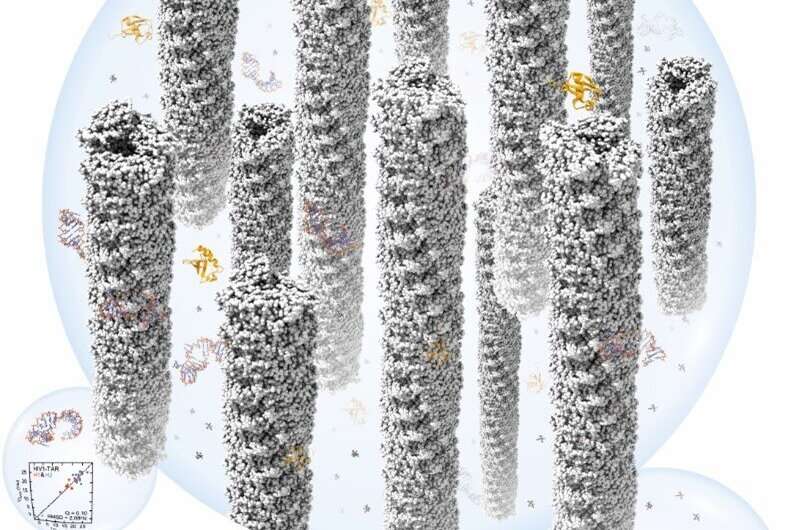This article has been reviewed according to Science X's editorial process and policies. Editors have highlighted the following attributes while ensuring the content's credibility:
fact-checked
peer-reviewed publication
trusted source
proofread
Study showcases elongated bacterial pili as a versatile alignment medium for NMR spectroscopy

In NMR spectroscopy, residual dipolar couplings (RDCs) have emerged as one of the most exquisite probes of biological structure and dynamics. The measurement of RDCs relies on the partial alignment of the molecule of interest with respect to the external magnetic field, for example by using a liquid crystal as a solvent.
Researchers from the IMBB and the Very High Field NMR Center in Lyon have now established E. coli type 1 pili as an alternative, liquid-crystalline alignment medium for the measurement of RDCs. To achieve alignment at pilus concentrations that allow for efficient NMR sample preparation, wild-type pili were elongated by recombinant overproduction of the main structural pilus subunit.
The research is published in the journal Angewandte Chemie International Edition.
Building on the extraordinary stability of type 1 pili against spontaneous dissociation and unfolding, the researchers show that the pilus-based medium is compatible with challenging experimental conditions such as high temperature, the presence of detergents, organic solvents or very acidic pH, setting it apart from most established alignment media.
Using human ubiquitin, HIV-1 TAR RNA and camphor as spectroscopic probes, the applicability of the medium for the determination of RDCs of proteins, nucleic acids and small molecules is demonstrated.
The study shows that type 1 pili represent a very useful alternative to existing alignment media and can readily assist the characterization of molecular structure and dynamics by NMR spectroscopy.
More information: Sirine Nouri et al, Elongated Bacterial Pili as a Versatile Alignment Medium for NMR Spectroscopy, Angewandte Chemie International Edition (2023). DOI: 10.1002/anie.202305120
Journal information: Angewandte Chemie International Edition
Provided by ETH Zurich





















